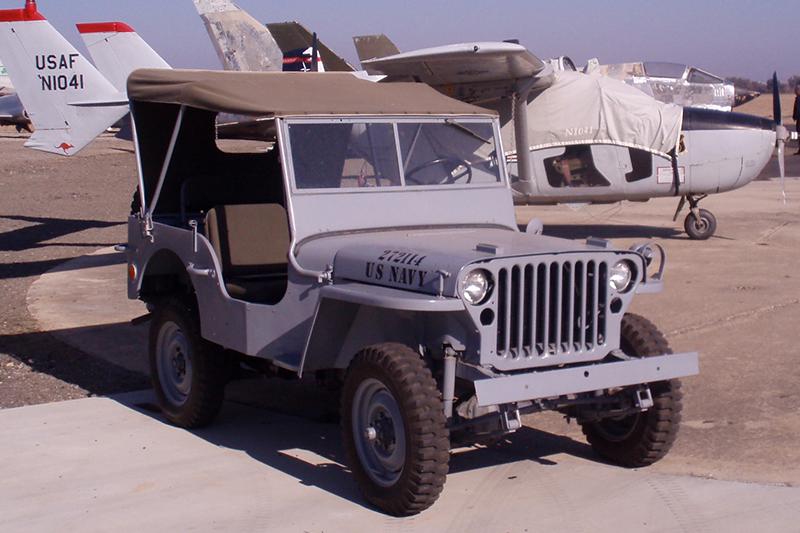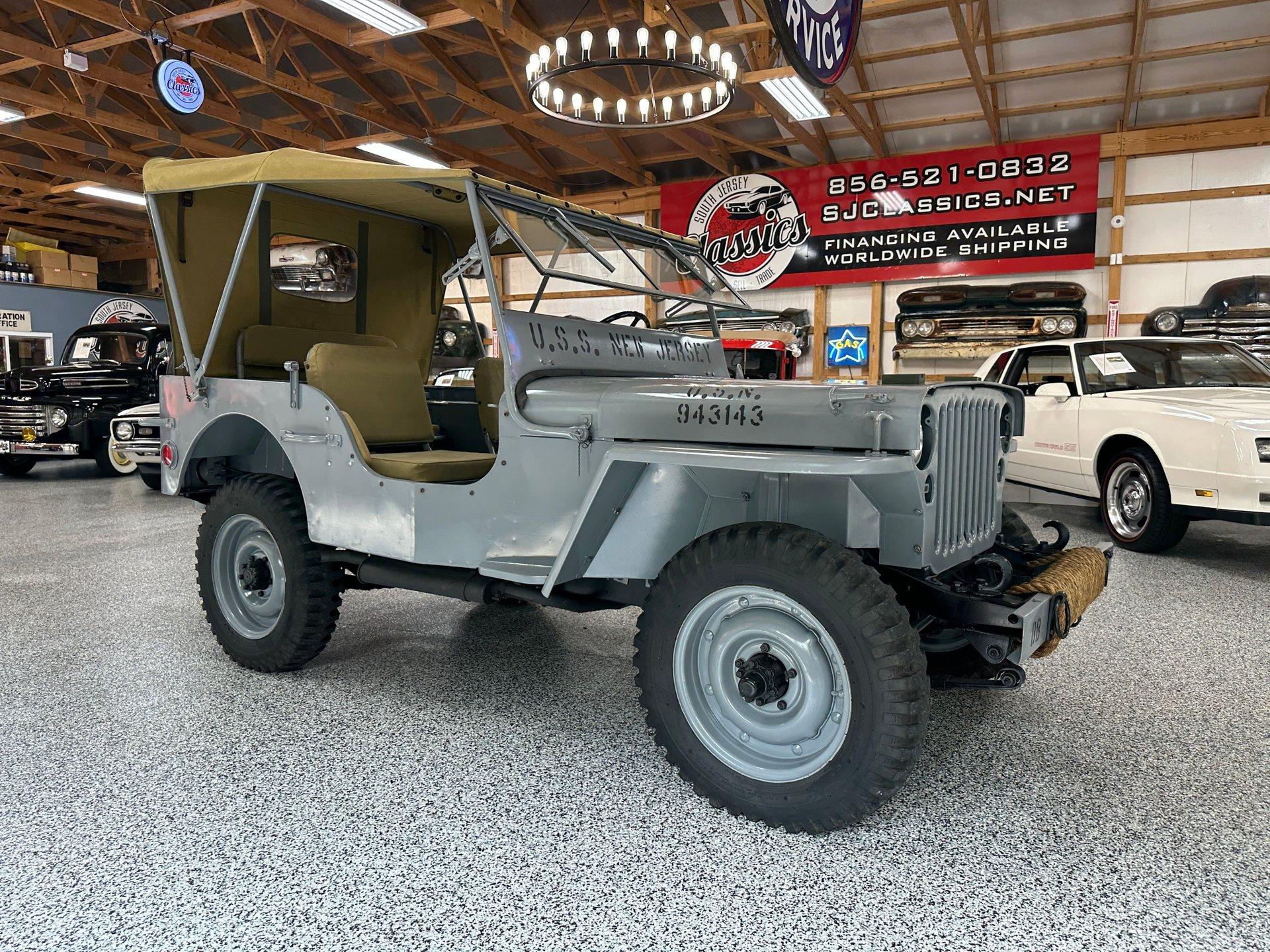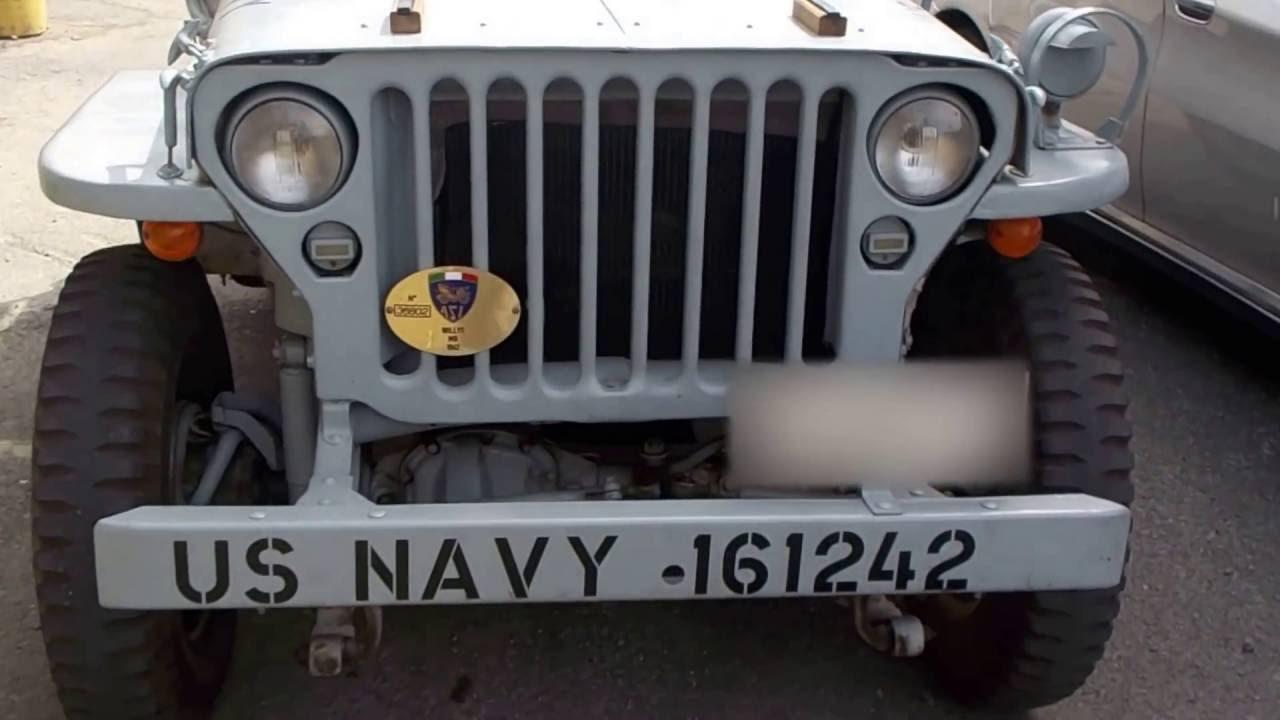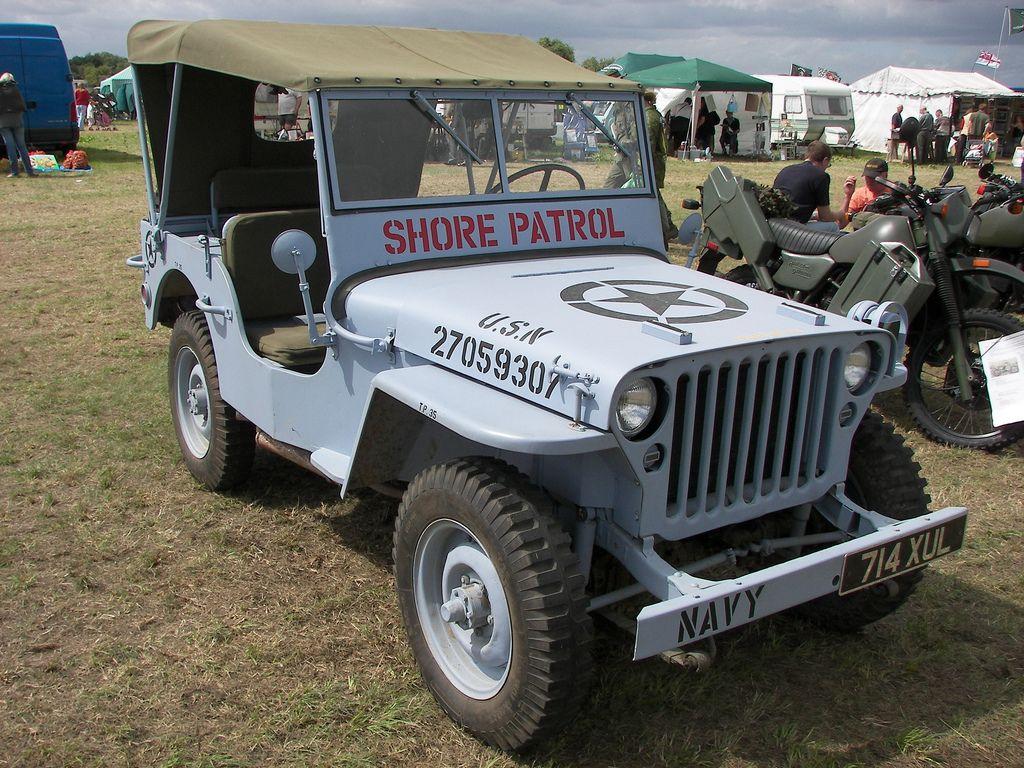1942 Jeep US NAVY
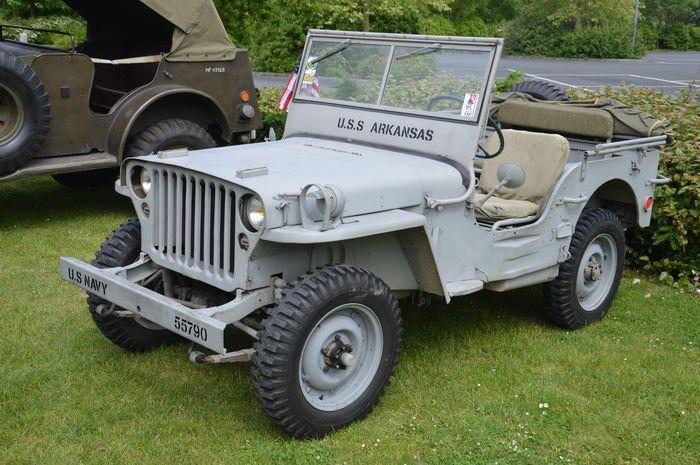
The descriptions of the Classic Cars in the Directory were partly generated or supplemented with the help of artificial intelligence (AI). The content may occasionally not always be entirely accurate or factually correct despite careful checking.
The JEEP US NAVY 1942, also known as the Willys MB, is a legendary Jeep that helped the Allied Forces gain victory in World War II. Designed as a light military utility vehicle, the Willys MB was produced from 1941 to 1945 and was used for various purposes such as reconnaissance, patrol, and transportation of troops, supplies, and equipment.
The JEEP US NAVY 1942 has a robust body made of steel and sits on a steel frame with a wheelbase of 80 inches. Its overall length is 131 inches, width is 62 inches, and its height is 74 inches. The vehicle has a ground clearance of 7.25 inches and a turning radius of 37 feet.
The engine of the JEEP US NAVY 1942 is a 2.2-liter four-cylinder "Go Devil" engine that produces 60 horsepower at 4,000 RPM. This engine is mated to a three-speed manual transmission with a two-speed transfer case, giving it a total of six forward gears and two reverse gears. This gave the vehicle ample power and torque to tackle various terrains and heavy loads.
The JEEP US NAVY 1942 is a four-wheel-drive vehicle, and its axles are supported by four leaf springs to provide a smooth ride on rough terrain. It is equipped with drum brakes on all four wheels and a handbrake that operates on the rear wheels. This makes the vehicle highly maneuverable and capable of handling steep inclines and declines.
The JEEP US NAVY 1942 has a towing capacity of up to 1,500 pounds, making it ideal for towing small trailers, field guns, and other equipment. It also has a payload capacity of up to 800 pounds, allowing it to carry supplies and gear for an entire squad.
The vehicle's interior is Spartan, with two front seats and a rear bench seat, which can accommodate up to three people. The rear seat can be folded down to create additional storage space. It is also equipped with a simple instrument panel, including a speedometer, fuel gauge, and ammeter.
Overall, the JEEP US NAVY 1942 is a highly capable and versatile vehicle that played a crucial role in the Allied victory in World War II. Its robust design, powerful engine, and excellent off-road capabilities make it a favorite of collectors and off-road enthusiasts alike.
Milestones
- January 1942: The US military contracts with Willys-Overland to produce a vehicle for military use. - March 1942: The first Jeep prototype is completed and tested by the US military. - July 1942: The US Navy receives its first shipment of Jeeps for testing and deployment. - August 1942: The US Navy officially adopts the Jeep as its primary utility vehicle for ground transport. - September 1942: The US Navy begins using Jeeps in combat operations in the Pacific theater. - October 1942: Jeeps are used extensively in Operation Torch, the Allied invasion of North Africa. - November 1942: A Jeep is featured on the cover of Life Magazine, becoming an iconic symbol of the war effort. - December 1942: Production of Jeeps ramps up, with nearly 70,000 produced by the end of the year. - January 1943: Jeeps are used in the invasion of Sicily, proving their value in rough terrain and combat situations. - March 1943: The US Army formally adopts the Jeep as its standard light utility vehicle. - May 1943: Jeeps are used extensively in the invasion of Italy, where they are critical in evacuating wounded soldiers and transporting supplies. - August 1943: Jeeps are used in the Allied invasion of Sicily, where they play a critical role in reconnaissance and transportation of troops. - December 1943: Jeeps are used in the Battle of Monte Cassino, where they are instrumental in carrying ammunition and supplies to the front lines. - March 1944: The US Navy modifies Jeeps for underwater use, creating the "Seep" (Sea Jeep). - June 1944: Jeeps are used extensively in the D-Day invasion of Normandy, where they are used for reconnaissance, communication, and transportation of troops and supplies. - September 1944: Jeeps continue to be used in combat operations in Europe, including the Battle of the Bulge and the liberation of Paris. - May 1945: The war in Europe ends, with Jeeps having played a critical role in the Allied victory. - August 1945: The war in the Pacific ends, with Jeeps having played a critical role in operations from Guadalcanal to Okinawa.Technical
- The JEEP US NAVY 1942 was a specialized military vehicle designed for use by the United States Navy during World War II. - It was based on the popular Jeep design, but included modifications and features specific to maritime use. - The vehicle featured a reinforced body and undercarriage to withstand the harsh conditions of shipboard use, as well as specialized components for water transport. - The JEEP US NAVY 1942 had a four-wheel drive system and a powerful engine, allowing it to handle a variety of terrain types and climates. - It was equipped with a winch and tow hooks for recovery and support operations. - The vehicle was also outfitted with a range of communication and navigation equipment, including radios and compasses for use during naval maneuvers. - The JEEP US NAVY 1942 was typically used for transporting personnel and equipment between ships and shore, as well as for reconnaissance and patrol missions. - It played an important role in support of amphibious landings and naval operations throughout the war.